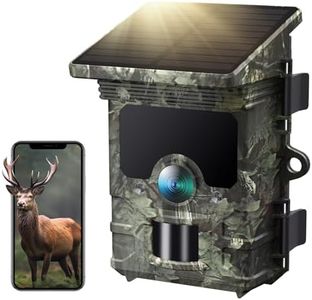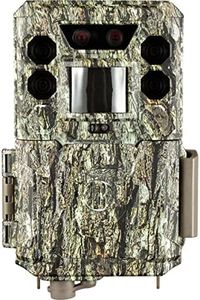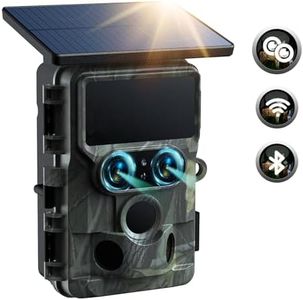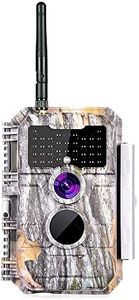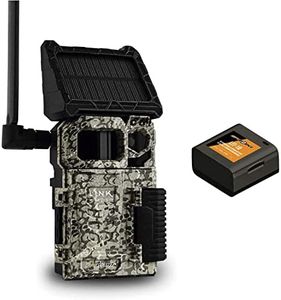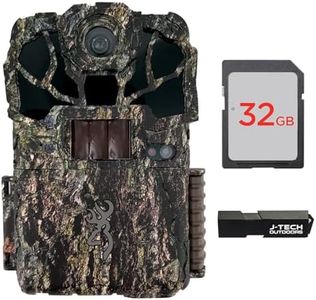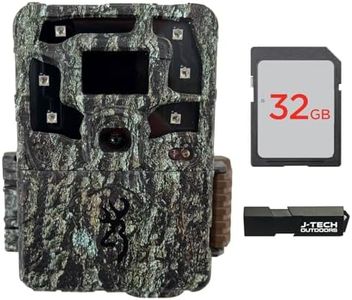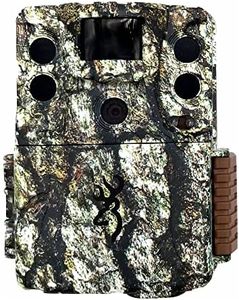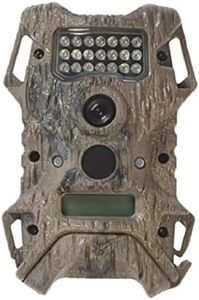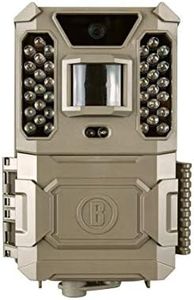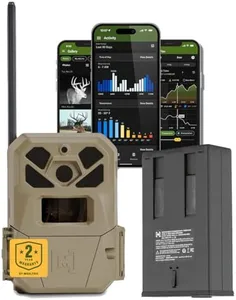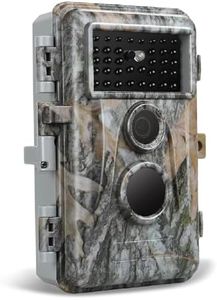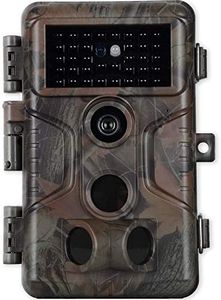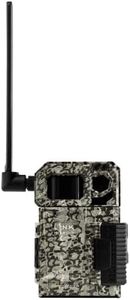We Use CookiesWe use cookies to enhance the security, performance,
functionality and for analytical and promotional activities. By continuing to browse this site you
are agreeing to our privacy policy
10 Best Game Trail Cameras
From leading brands and best sellers available on the web.Buying Guide for the Best Game Trail Cameras
Selecting a game trail camera can be exciting if you enjoy wildlife observation, hunting, or property monitoring. The best camera for you depends on where you’ll place it, the type of animals or activity you want to capture, and how you plan to use the captured images or videos. Start by thinking about your environment—is it densely wooded, wide open, or close to trails? Also, consider how often you’ll check the camera, whether you need nighttime images, and how detailed you want your photos to be. By focusing on the camera’s key features, you’ll find the best fit for your needs.Image ResolutionImage resolution, often measured in megapixels (MP), determines how clear and detailed the photos from your trail camera will be. Higher resolution means sharper images, which is especially useful if you want to identify animals at a distance or see small features. Basic cameras might offer around 8MP, which works well for general monitoring, while mid-range options provide 12-16MP for better detail, and high-end models can go 20MP and above. If you want crisp, printable photos or need to analyze fine details, aim for higher resolution. For simple scouting or security purposes, lower resolutions are generally sufficient.
Detection Range and AngleDetection range tells you how far from the camera movement or heat can trigger a photo or video, while detection angle describes the width of the area the camera can sense. Most cameras offer ranges between 40 and 100 feet and angles from 45 to 120 degrees. A longer range and wider angle are helpful if you want to capture more activity in open areas, while a narrower setting may suit trails or small clearings. Think about the spot you’ll place the camera—the more open the area, the more range and angle may help. In tight areas, shorter ranges and narrower angles can reduce unnecessary triggers.
Trigger SpeedTrigger speed measures how quickly the camera captures an image after detecting movement. Fast trigger speeds—often less than half a second—are essential if you want to catch quick-moving animals. Slower speeds may miss subjects or only capture their tails. If your main goal is to photograph fast wildlife, like deer or birds, look for a camera with a very fast trigger (0.2 to 0.4 seconds). For slower animals or general observation, even a one-second trigger speed will work just fine.
Night Vision (Infrared Technology)Night vision allows your camera to capture images in low light using infrared (IR) LEDs, which are often classified as low glow, no glow, or white flash. Low glow emits a faint, barely visible light, no glow is completely invisibile and less likely to spook wildlife or alert intruders, and white flash produces a bright flash (like a traditional camera) for color pictures at night. If nighttime use is important and you don’t want to disturb animals, no glow is best. If color night images are a must and you don’t mind some disruption, white flash is an option. Low glow is a middle ground for most users.
Battery LifeBattery life is how long your camera can operate before needing new batteries, often ranging from weeks to several months, depending on settings and activity levels. Longer battery life means fewer trips to check or change batteries, which is handy for hard-to-reach locations or if you prefer a ‘set it and forget it’ approach. If you plan to check your camera rarely, look for models that boast long battery life and consider using lithium batteries for longer-lasting power, especially in colder climates. If you visit your site often, shorter battery life might not be a big issue.
Storage and MemoryMost trail cameras use SD cards to store photos and videos. The maximum supported card size often ranges from 16GB up to 256GB or more. More storage allows for longer periods between emptying the card, which is useful if you capture lots of activity. If your spot sees lots of animals or you shoot high-resolution video, go for a camera that supports larger memory cards. For less busy areas or image-only setups, smaller cards might suffice and you can manage with more frequent check-ins.
Weather ResistanceSince your trail camera will live outdoors, its weather resistance (often denoted as IP rating or general resistance) is important. This spec tells you how well the camera can withstand rain, snow, humidity, heat, or dust. Most cameras are designed for average weather, but in extreme environments, choose models with higher weatherproof ratings. If your camera will face heavy rain or very cold or hot temperatures, select one specifically made for tough conditions. For mild climates or under cover, almost any model will hold up.
